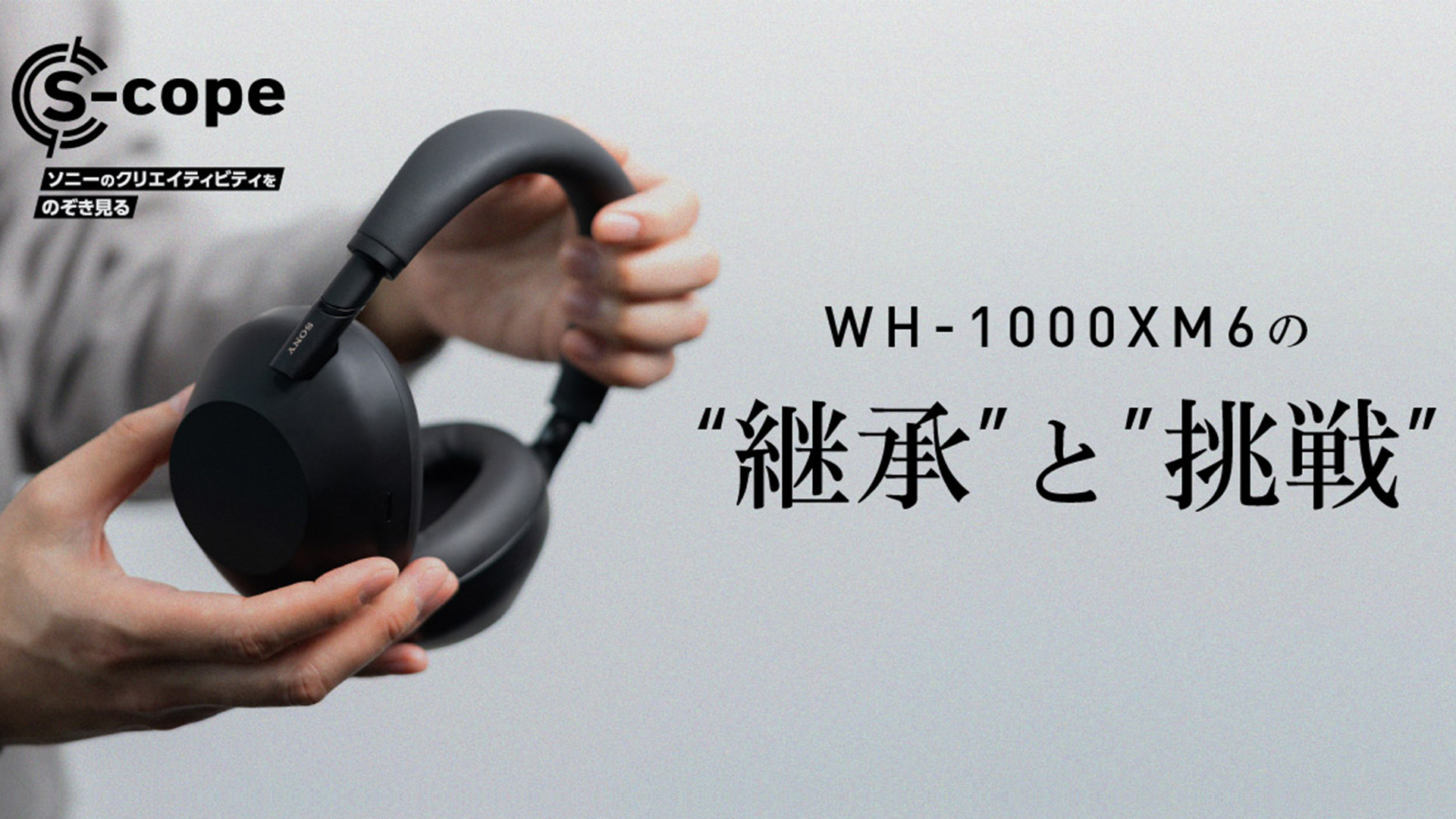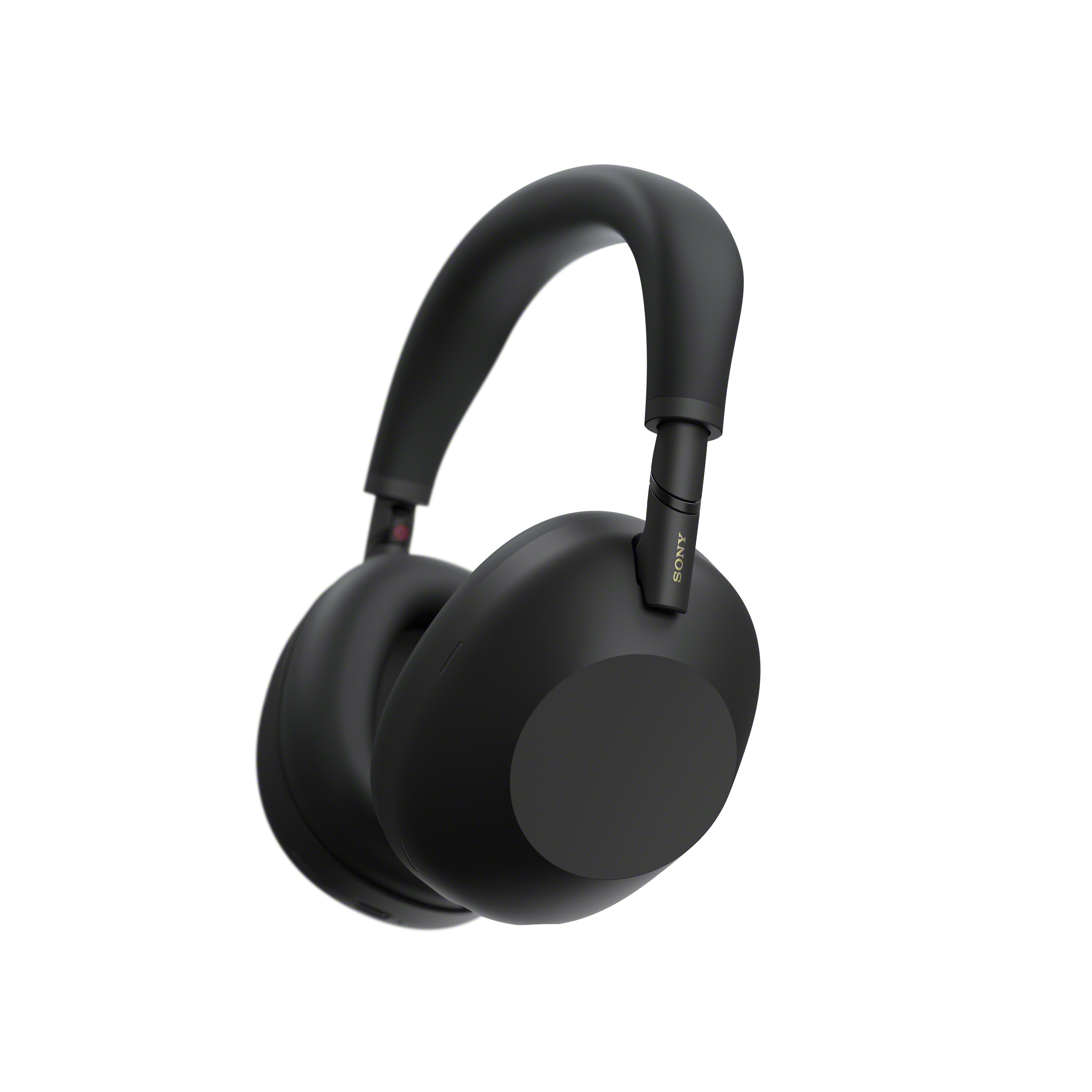The “legacy” and “challenge” of the WH-1000XM6
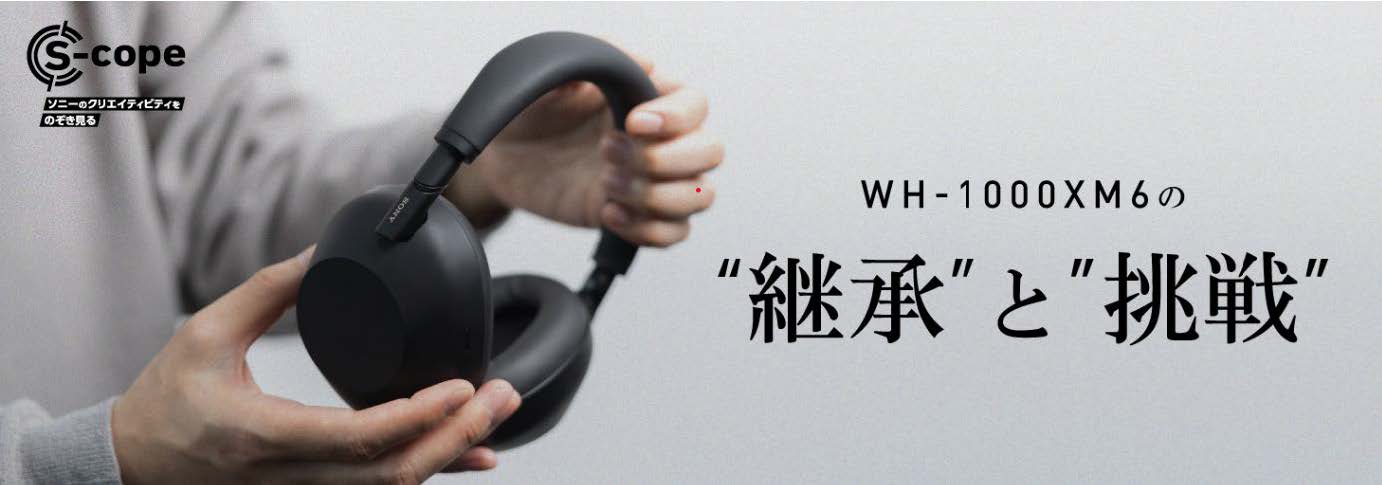
Wireless Noise Cancelling Stereo Headset WH-1000XM6
The Sony 1000X series of wireless headphones, introduced in 2016, has evolved through a focus on sound quality and noise cancelling functionality to deliver the ultimate listening experience to users.
Over the years, we have continued to refine our vision, so the latest model in the 1000X series—the WH-1000XM6—retains our commitment to sound quality while also incorporating a variety of new features tailored to the needs of the times. With a soft, comfortable fit and a sound experience you can tailor to your lifestyle and listening preferences, the WH-1000XM6 has evolved to allow even more people to enjoy its impressive sound. Here, members of the development team share their passion about what they have achieved, and continue to strive for, with the WH-1000XM6.
Ten years in the making. The philosophy remains unchanged.
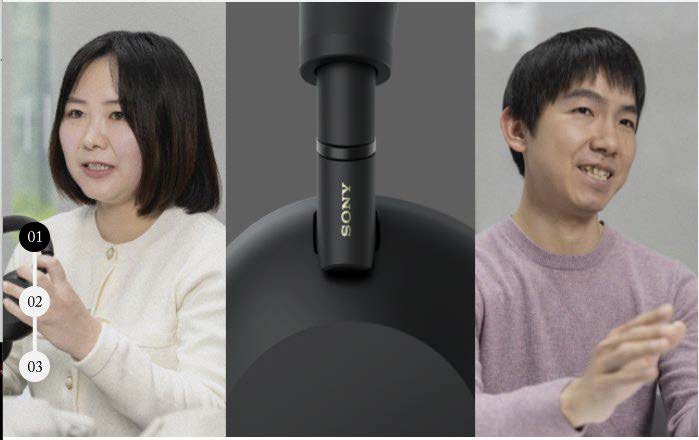
When the 1000X series debuted in 2016, the headphone market was still dominated by wired models. Many people perceived wireless models as offering only poor sound quality, unstable connections, and being heavy. In response, the 1000X series was developed under the philosophy of “delivering wireless headphones that offer the best sound quality anywhere, with any content”, by incorporating the latest technology and expertise to continuously refine their performance. The new WH-1000XM6 represents the cutting edge of this decade-long evolution.
Comments from the developers

Product Planning
Nakanishi
The difference is clear even to those who have used previous models. We hope that not only those who are considering upgrading, but also those who are satisfied with their current headphones will give them a try. We are confident that you will be surprised by the difference.

Project Leader
Takata
We kept you waiting for three years since the release of the previous model, but we believe that the WH-1000XM6 is a product that has undergone significant evolution and can be called the “definitive version.”
Reaching new heights through continuous “inheritance.”
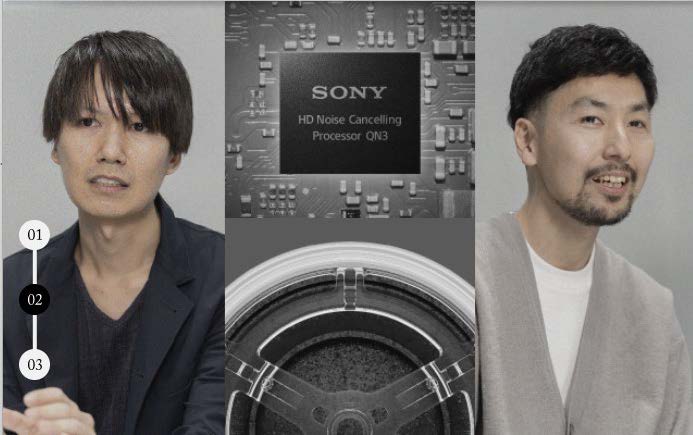
The core of the WH-1000XM6 lies in sound reproduction that faithfully reproduces the creator's intentions for any genre of music, coupled with excellent noise-cancelling performance that blocks out surrounding noise so you can focus on the sound without distraction. The sound quality and noise-cancelling performance have been improved through each successive generation thanks to our relentless pursuit of perfection. Of course, the series also features the same attention to detail that was apparent right from our first model, from the comfortable fit to the high-quality design. It is by identifying what is truly important and continuing to build on that that we have been able to reach this level of excellence.
Comments from the developers

Noise Canceling Design Manager
Ito
In the WH-1000XM6, we significantly enhanced the microphones to evolve our “Multi Noise
Sensor Technology”, already well-received in previous models. Specifically, we increased the number of microphones to 12 in total, with four microphones on each side to capture ambient noise and two microphones on each side to capture noise closer to the ear. These microphones work together to significantly improve noise-cancelling performance.

QN3 Development Manager
Tamori
To achieve high sound quality and precise noise-cancelling, the processing power of the chip inside the headphones is crucial. Since the 1000X series aims for both the best sound quality and noise-cancelling performance, we could not compromise on the processor. Research and development, product design, and semiconductor design teams worked together to develop the new, high-quality noise-cancelling processor, QN3, which delivers improved sound quality, noise-cancelling performance, and many other enhanced features.
New possibilities born from challenge that keep pace with the changing times.
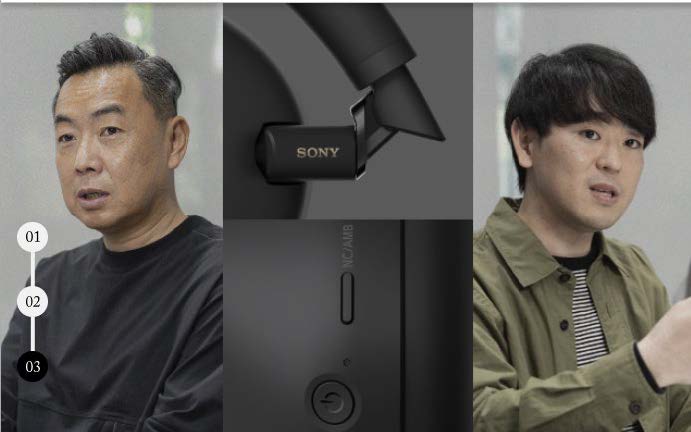
The ʻWH-1000XM6ʼ preserves the core values of the series while embracing various new innovations to adapt to changing times. Through collaborative sound design with renowned, and international music award-winning, sound engineers , plus new features to reproduce the immersive sound experience of a movie theater, we have expanded the possibilities of wireless headphones. This time around, we aimed to create an inclusive design that leaves no one behind, so even more people can enjoy the WH-1000XM6 experience.
Comments from the developers

Acoustic Design Manager
Takamura
By incorporating the expertise of professionals who work at the forefront of the music scene, across a wide variety of genres, we were able to achieve sound quality that matches the music of today while maintaining Sonyʼs focus on the ability to enjoy any genre of music.

Design Manager
Sumii
The WH-1000XM6 uses magnets instead of a zipper to close the case, making it easy for anyone to open and close. In addition, we focused on intuitive operability, such as a headband shape that makes it easy to tell front from back, and control buttons that are easy to locate by touch. The result is a headphone that anyone can use comfortably.
WH-1000XM6 development team

Product Planning
Nakanishi

Project Leader
Takata

Acoustic Design Manager
Takamura

Noise Canceling Design Manager
Ito

QN3 Development Manager
Tamori

360 Upmix for Cinema Development Manager
Yamashima

Mechanical Design Manager
Samejima

Design Manager
Sumii

Three years in the making
The definitive version of the 1000X series
――Tell us about the philosophy that underlies the 1000X series, including the WH-1000XM6.
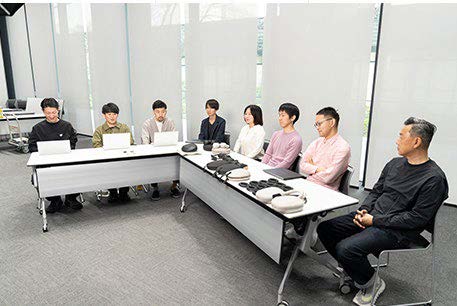
Nakanishi: The first model in the 1000X series, the MDR-1000X, was released in October 2016, based on the philosophy of “delivering wireless headphones that offer the best sound quality anywhere, with any content”. At the time, there were still many skeptics about wireless sound quality, but the ʻMDR-1000Xʼ dispelled such doubts by featuring ʻLDACʼ and ʻDSEE HXʼ for high-resolution sound quality even in wireless mode, as well as industry-leading noise-cancelling technology. These features remain a core foundation for the 1000X series to this day.

――So, sound quality and noise-canceling performance are the “backbone” that the series has inherited and refined over the years. Among the models released since then, which ones do you think are the most symbolic?
Nakanishi: Personally, the models that stand out most to me are the third-generation model, the WH-1000XM3, released in October 2018, and the fifth-generation model, the WH-1000XM5, released in May 2022.
The ʻWH-1000XM3ʼ was the first model to feature the high-quality noise-cancelling processor QN1 (hereinafter referred to as QN1), which served as the predecessor to the high-quality noise-cancelling processor QN3 (hereinafter referred to as QN3) found in newer models, significantly enhancing noise-cancelling performance. We believe that this product and its successor, the WH-1000XM4 (released in September 2020), established Sony's reputation for noise-cancelling functionality.
The WH-1000XM5 boldly changed the design of its predecessor, which had been praised by the media as having “no room for improvement in any aspect,” and challenged itself to propose a “new ideal headphone”. It has been well received by women, young people, and those who have never used the 1000X series before, and received a great response, including winning the top prize at the iF Design Award 2023.
――Please tell us about the latest model in the 1000X series, the WH-1000XM6.
Nakanishi: Above all, this model represents a deeper exploration of the core elements of the 1000X series: Sound quality, and noise-cancelling performance. In particular, we collaborated
with Sony Music's Battery Studios and several other mastering studios to fine-tune the sound quality, pursuing an even higher level of audio performance. The noise-cancelling functionality has also been enhanced through the adoption of the new QN3 chip and an updated algorithm.
On top of that, we have brought back the much-requested folding mechanism and added new features such as “360 Upmix for Cinema,” which allows you to experience three-dimensional sound like in a movie theater, and “BGM Effect,” which is perfect for listening while doing other activities, all tailored to suit each user's lifestyle.

Takata: As a result, we ended up keeping our customers waiting for three years since the announcement of the previous model, but we believe that we have achieved a major evolution and created a product that can be called the “definitive version.”
Further upgrading sound quality through collaboration with professionals
――Letʼs delve deeper into the individual features with the development team. Please tell us how you evolved the sound quality of the WH-1000XM6, the latest model in the 1000X series.
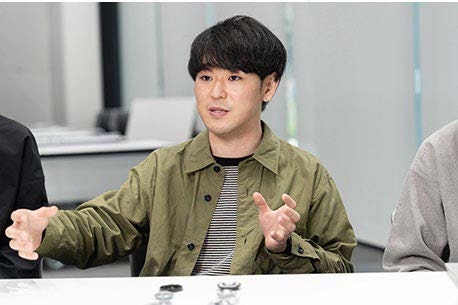
Takamura: With the WH-1000XM6, we significantly upgraded the sound quality in two ways. The first is the joint tuning with mastering studios that Nakanishi mentioned earlier. The second is hardware upgrades.
We have conducted joint tuning with mastering studios in the past, but that was limited to studios within the Sony Music group, such as Battery Studios. This time, we took on a new challenge by collaborating with leading external studios. Specifically, we worked with engineers who have won international music awards at STERLING SOUND, a world-renowned mastering studio in New York; and Coast Mastering in Berkeley, California, to refine the sound of the WH-1000XM6.
――Why did you decide to collaborate with them?
Takamura: With the diversification of music and how people enjoy it, we felt it was necessary to broaden our horizons by incorporating external technologies and knowledge in order to update the 1000X series and Sony's sound quality.
――Wasn't it difficult to work with external studios that are not part of the Sony Group, given the differences in corporate culture?

Takamura: Yes, it was. Personally, I was initially worried that they might propose a direction completely different from our approach to sound creation. However, once we started working together, we found that our goals were closer than expected. We shared a common sense in many areas, such as the balance between low frequencies and vocals, and the accuracy of instrument positioning.
――So, the collaboration proceeded without any issues?
Takamura: Of course, that doesn't mean there were no differences of opinion. There were many times when I was surprised by ideas that were different from our “common sense.” However, as we incorporated those opinions and fine-tuned the sound, I often felt that the sound was improving. Through this project, I feel that my own view of music has been updated. It was an invaluable experience as an engineer.
――So, collaborating across group boundaries was worthwhile?
Takamura: Yes. By incorporating the expertise of professionals who are at the forefront of the music scene and handle a wide variety of genres, we were able to achieve a sound that matches the music of today while maintaining the points that Sony has always emphasized, such as “enjoyable listening, regardless of genre”. And, of course, reproduce sound as intended by the artists.
――Tell us about the other improvements, in particular the hardware updates.

Takamura: In terms of hardware, we first updated the driver unit that produces sound. The material and size of the diaphragm remain the same as in the WH-1000XM5, but we made adjustments to maintain the characteristics of the register that controls airflow behind the driver unit, to reduce distortion in the low-frequency range. Additionally, by drilling holes in the bobbin that wraps around the voice coil inside, we further improved the reproduction of mid- and high-frequency sounds.
Another improvement is the “predictive noise shaper” newly incorporated into the QN3 chip. This is a technology for improving sound quality when converting digital signals to analogue. When you listen to it, you should notice a significant improvement in the clarity of the bass and the extension of the high frequencies, as well as an increased sense of sound expansion.
――Could you explain that in a little more detail?


Tamori: A “noise shaper” is a technology that controls the spectrum of quantization noise in digital signals during analogue conversion. Our “predictive noise shaper” was developed with academic guidance from Nagoya Institute of Technology, which has extensive expertise in this field. By predicting and optimising quantisation noise, it accurately responds to sudden signal changes such as the onset of sound. Compared to conventional noise shapers, it offers greatly improved low-frequency energy and smooth high frequencies.
In developing this chip, we used the same board used in the development of Sony's S-Master digital amplifier to verify and optimise the algorithm. Since this technology is used to convert digital signals to analogue at the final stage of audio playback, the performance of the analogue circuit is important. We believe this level of precision in a headphone was only possible with the QN3 chip, which offers more than seven times the performance of the conventional QN1 chip to reduce any compromises in the analogue circuit design.
――It's amazing that the performance is more than seven times that of that earlier chip.
Tamori: In order to achieve high sound quality and accurate noise cancelling, the processing power of the chip installed in the headphones is important. Since the 1000X series aims for the highest sound quality and noise cancelling performance, we cannot compromise on the processor. Our research and development, product design, and semiconductor design teams worked together to develop the QN3 chip, to deliver many enhancements including improved sound quality and noise cancelling performance.
From watching movies to listening while doing other things
Suitable for a variety of usage styles
――The WH-1000XM6 incorporates numerous features designed to allow users to actively enjoy the refined sound quality in a wide range of scenarios. Could you explain the details and objectives of these features?
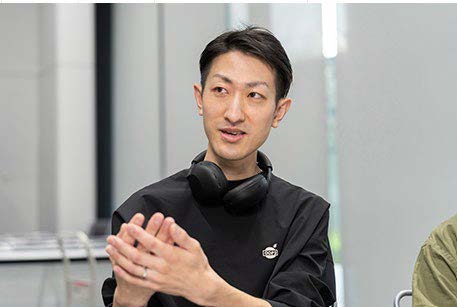
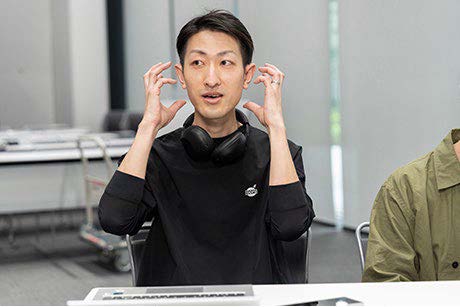
Yamashima: First, let me introduce “360 Reality Audio Upmix for Cinema” (hereinafter referred to as 360 Upmix for Cinema), which makes movie viewing with the WH-1000XM6 more realistic. This is a technology that creates three-dimensional surround sound like that of a movie theater from stereo audio (2ch). Typically, when watching a movie with a smartphone and Bluetooth® headphones, the audio signal is reduced to 2ch, resulting in a loss of the scale and depth of sound characteristic of movies.
In contrast, 360 Upmix for Cinema analyzes the stereo audio within the headphones in real time, estimates the positioning of each sound component, and upmixes it into a three-
dimensional audio signal that includes the upper direction. By combining this with Sony's long-established HRTF (Head-Related Transfer Function) technology and a proprietary acoustic simulation technology developed specifically for this feature, which reproduces the large space of a movie theater, it recreates the sense of a large screen right in front of you. You should be able to experience overwhelming immersion in all video content, including movies and dramas.
――With smartphones becoming larger and higher resolution, the sense of immersion in images is increasing, but the audio has remained in stereo, which can feel out of place. This feature will be welcome news for those who have felt this way.
Yamajima: Even those who have been spoiled by a well-equipped home theater system at home can enjoy an impressive cinema-like experience on a smaller screen. We highly recommend giving it a try.
And one more new feature we'd like to introduce today is the “BGM Effect,” which is specifically designed for background listening. Typically, when listening to music, you focus on the song itself, but there are times when you want to play music in the background while working or reading. Our BGM Effect recreates the atmosphere of a café or beauty salon, where sound flows softly throughout the space, and helps alleviate the feeling of music being right next to your ears. It achieves a unique balance where you can enjoy noise cancellation while still hearing music in the background, helping you stay focused on work or study.
Nakanishi: These features were added in response to the many users who use the 1000X series for purposes other than music playback. We hope that users will enjoy all kinds of entertainment, including music, videos, and games, with the best sound quality possible.
Further improved noise cancelling performance
Automatically optimised to suit the surrounding environment
―― I would like to ask you about noise cancelling. We hear that the noise-cancelling performance has been greatly improved in the WH-1000XM6. What specific approach did you take to achieve this?
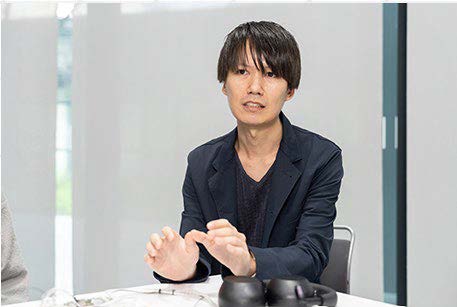
Ito: In the WH-1000XM6, we significantly increased the number of microphones from eight in the previous M5 model, in order to further improve the Multi Noise Sensor Technology that was so well received in previous models. Specifically, we have linked a total of 12 microphones—four external feedforward microphones that pick up ambient noise and two internal feedback microphones that pick up noise close to the ear—to greatly improve noise cancelling performance.
――How did you decide on the number of microphones?
Ito: We decided based on research and development department verification of how many microphones were needed to achieve ideal noise cancellation. While increasing the number of microphones improves noise cancellation performance, it also affects cost and battery life, so we carefully balanced these factors to arrive at a total of 12 microphones. Increasing the number of internal microphones to two is a major advancement and a first for Sony's headband-type products.
――Was it difficult to determine the placement of these microphones?


Ito: Yes, it was. We attached many microphones to the outside and inside of existing models (see photo) and tried various patterns to find the best placement. The most difficult part was positioning the second feedback microphone. We discussed this with the mechanical design team and found it difficult to determine the best position that would be close to the ear and stable in any wearing position without affecting comfort. By fine-tuning the placement down to the millimeter, we were finally able to find the best positions.
――The noise-cancelling performance of previous 1000X series models is already acclaimed, so how does the noise-cancelling performance of the latest model compare?
Ito: It is effective against all types of noise, but it has been further improved to reduce human voices and everyday living noises such as those in a living room. We believe this will be appreciated by those who work from home and are bothered by the voices of family members or other household noises.

Nakanishi: In addition to increasing the number of microphones, the WH-1000XM6 features an upgraded version of the Auto NC Optimizer found in the previous model, called the Adaptive NC Optimizer. This analyzes surrounding sounds in real time and optimises the noise-cancelling function. It adapts to changes in the sound environment, as well as differences in head shape, changes in wearing conditions such as hair covering the headphones or wearing glasses, and individual user characteristics, enabling a superior noise-canceling experience for a wider range of users.
Tamori: Noise cancellation technology originated from the need to eliminate noise in aircraft cabins, but in recent years, the number of users has grown significantly, and it is now used in various everyday situations. In response to this trend, we named the technology “Adaptive” to emphasise its ability to maximise noise cancellation effects not only in response to changes in air pressure but also to changes in the noise environment. The difference in effectiveness is something that anyone can hear once they try it.
――What were the challenges in achieving this?

Tamori: Analyzing a large number of microphone signals in real time naturally increases the processing load. My research and development department was able to develop the basic algorithm on this special development board, but we struggled with how to implement the function without affecting battery performance or the size of the device. I don't think we could have achieved this without developing the QN3 chip.
――So the QN3 chip plays a major role in this as well.
Tamori: That's correct. This time, the operation is adaptive, so there were challenges unique to real-time processing, and we developed the algorithms from scratch. It was only because we were able to develop the QN3 chip that we were able to maximise our algorithm performance for the best noise-cancelling performance.
Refining the simple form
to create a design that is easy to use for everyone
――The WH-1000XM6 has undergone significant design evolution from its predecessor, the WH-1000XM5. Please tell us about the challenges you faced this time.
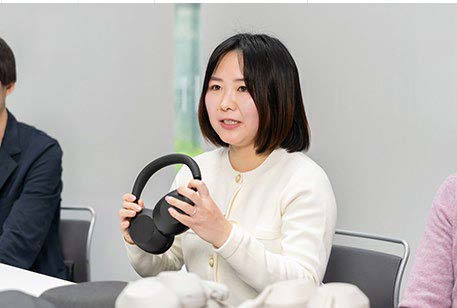

Nakanishi: Basically, we have inherited the design that was significantly refreshed in the WH-1000XM5, while challenging ourselves to realize the requests we received from fans of the 1000X series. Specifically, we have revised the shape and cushioning of the headband in response to feedback that the top of the headband felt uncomfortable during long periods of use, and we have adopted a folding mechanism to make it easier to carry.
Additionally, we have focused on improving accessibility. To ensure that all users can enjoy this product comfortably, we have paid meticulous attention to details such as an asymmetrical design that makes it easy to distinguish the front and back, a magnetic closure mechanism for the case, and the ease of finding and pressing each button.
―― Could you elaborate on your changes related to wearing comfort?
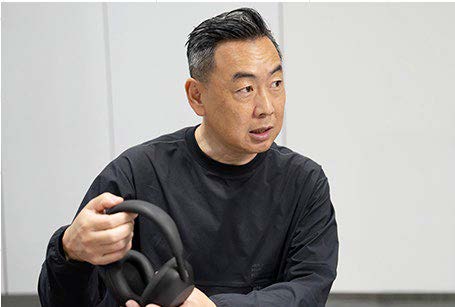
Sumii: The reason we made the headband as thin as possible for the WH-1000XM5 was because the design team wanted it to be as unobtrusive as possible when worn. For the WH-1000XM6, we wanted to maintain this goal while improving the overall satisfaction in terms of fit, usability, and quality.
The first thing we focused on was improving the fit. By widening the headband, we reduced pressure on the top of the head, ensuring comfort even during extended use. From an accessibility perspective, we added a slight curve to the back side and moved the seams from the front and back to the back only, making it easier to wear the headphones in the correct orientation.

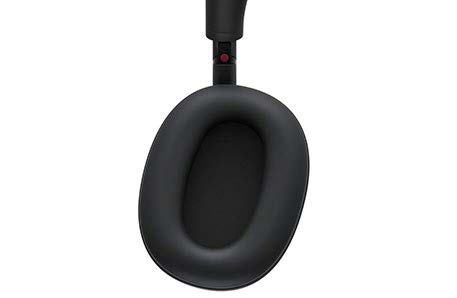
Samejima: We also paid particular attention to the ear pads, which come into direct contact with the ears. This part not only affects the fit, but also has a significant impact on sound quality and noise-canceling performance, as well as the overall appearance. In addition, if the fabric (screen) in the center of the ear pad is too stiff, it will feel uncomfortable when it touches the ear, and if it is too loose, it will cause acoustic problems.
――So it's not just a matter of making it soft and comfortable for the ears.
Samejima: Exactly. Especially this time, the design team requested specific considerations for how the ear pads deform when worn, so we experimented with the urethane shape inside the ear pads and the tension of the central fabric (screen) to maintain sound insulation while prioritising comfort and aesthetics during wear.
Sumii: We also wanted to achieve a sense of unity between the housing and ear pads in terms of appearance. Of course, since the materials are different, it's impossible to achieve complete integration, but thanks to the efforts of the mechanical team, we were able to create something we're satisfied with.
――What were the challenges of adopting a folding mechanism?


Samejima: The biggest hurdle was balancing design and functionality. In order to incorporate the folding function into the desired design, we used metal parts to increase strength. In doing so, we deliberately exposed the metal parts as a design accent, adding the folding mechanism while maintaining the slimness and visual appeal of the product.
Sumii: Many headphones look their simplest and most beautiful when unused, and I felt that the metal arms inside the headband were exposed when in use, creating a step that was somewhat unsightly. With the ʻWH-1000XM5,ʼ we redesigned the headband structure to ensure it looks beautiful even when in use. The ʻWH-1000XM6ʼ further refines this, making the arm section thinner when viewed from the front and achieving a consistent texture. The arch shape of the headband has also been redesigned to fit from the top of the head to the ears, minimising gaps above the ears. A special manufacturing method was adopted for the joints to make them less noticeable.
――I hear that many female users don't want others to think they have a large head because they extend the arms, so this is a good update. Finally, please tell us about improvements in accessibility.

Sumii: A few years ago, we had an in-house design project titled “How can we make Sony's audio products easier for everyone to use?” As part of this initiative, we verified the process of purchasing and setting up the product for diverse users, including those with disabilities and the elderly. We achieved more impressive results than we had anticipated. For example, a person with a disability found it difficult to open the case because it was closed with a zipper, which was something we had overlooked in our previous product design.
As a result, we changed the case of the WH-1000XM6 from a zipper to a magnetic closure, making it easy for anyone to open and close. Additionally, we focused on achieving intuitive operability, such as the headband shape that makes it easy to distinguish front from back, and button placements that can be identified by touch. We believe we have created headphones that are comfortable for everyone, including those without disabilities.
――Improvements in accessibility benefit all users, regardless of whether they have disabilities or not.
Sumii: That's right. We have also carried over popular features from previous models, such as the easy-to-open packaging made from an original blend of environmentally friendly materials.
We want you to experience Sony's commitment to continuity and our new challenges.
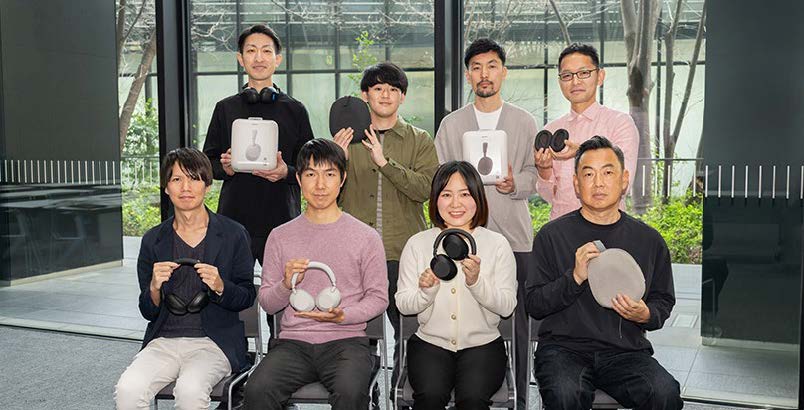
Given the long development period, we were so excited to announce this highly-anticipated product. Our WH-1000XM6 are the result of many members, from sound design to mechanical and aesthetic designers, all focused on compromising nothing to incorporate everything they wanted to do. Having been responsible for the electrical design of the ʻWH-1000XM3ʼ to the ʻWH-1000XM5ʼ models equipped with the QN1 chip, the introduction of the QN3 chip is what stands out the most to me. As mentioned in this interview, many features and experiences have been made possible by this chip. This allows us to provide a more comfortable listening experience in a wider range of scenarios. I hope you will experience its power for yourself.
Project Leader, Takata
The ʻWH-1000XM6ʼ not only enhances the outstanding sound quality and noise-cancelling performance that the 1000X series has inherited, but also features a design and wearing comfort that have been meticulously refined to the smallest detail. While maintaining the exceptional sound quality and noise-cancelling performance, we have also taken bold steps to incorporate innovative features such as a foldable design and a user-friendly storage case. The difference is noticeable even for those who have used previous models, so we encourage not only those considering an upgrade, but also those currently satisfied with their headphones to give it a try. We are confident you will be impressed by the difference.
Product Planning, Nakanishi

